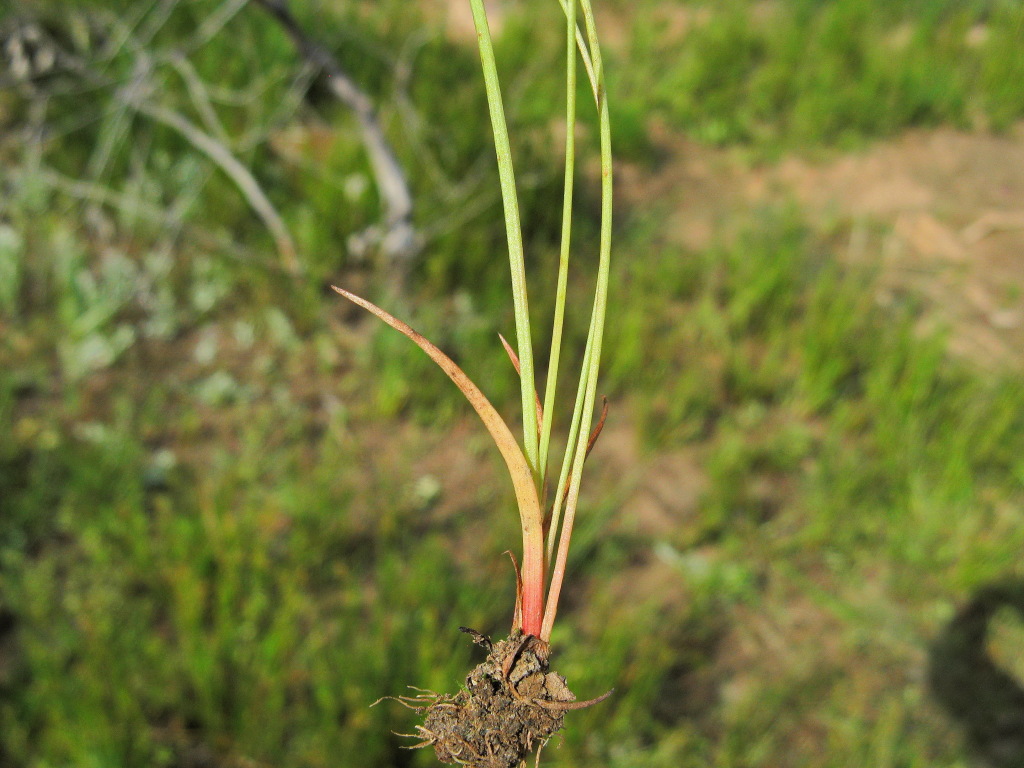Juncus capitatus
WeigelDwarf tufted annual, often red-tinged. Culms erect, filiform, 1–15 cm high. Leaves basal, shorter than the longest mature culm; blade linear, flat or channelled, solid, acute; auricles absent. Inflorescence a single (1–)3–13(–22) flowered cluster, occasionally with 1–3 stalked lateral clusters; primary bract erect or spreading, channelled; prophylls absent. Tepals very unequal; the outer with membranous margins, 3–6 mm long, acuminate, with excurved apices; inner usually at least 1 mm shorter than outer, almost entirely membranous, acute to acuminate; stamens 3(–4), anthers 0.2–0.7 mm long. Capsules reddish in the upper part, ovoid to obovoid, 1.5–2.5 mm long, shortly mucronate, c. half the length of the outer tepals; valves only partly separating; seeds c. 0.3 mm long, with fine longitudinal and transverse ridges discernible at high magnification, minutely apiculate at one or both ends. Capitate Rush Flowers mostly Sep.–Dec., seeds shed mostly Nov.–Mar.
LoM, MuM, Wim, GleP, Brid, VVP, VRiv, MuF, GipP, OtP, WaP, Gold, CVU, GGr, DunT, NIS, EGL, EGU, WPro, HSF, HNF, OtR, Strz, VAlp. Also naturalised WA, SA, NSW, ACT, Tas. Native to Eurasia, Africa. A widespread annual, occurring in a range of vegetation communities, usually in open areas which are permanently or seasonally damp.
Albrecht, D.E. (1994). Juncus. In: Walsh, N.G.; Entwisle, T.J., Flora of Victoria Vol. 2, Ferns and Allied Plants, Conifers and Monocotyledons, pp. 197–233. Inkata Press, Melbourne.
 Spinning
Spinning



